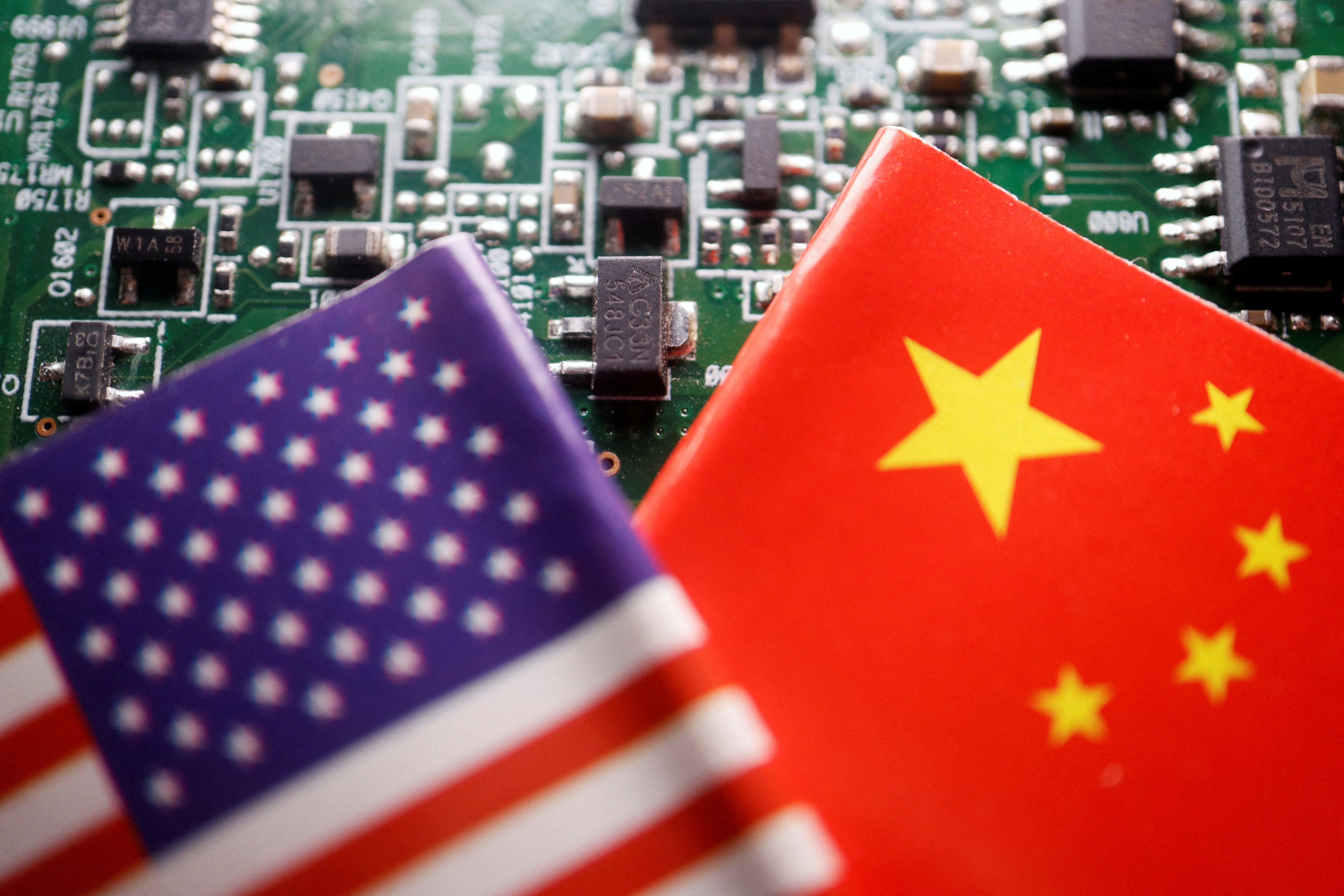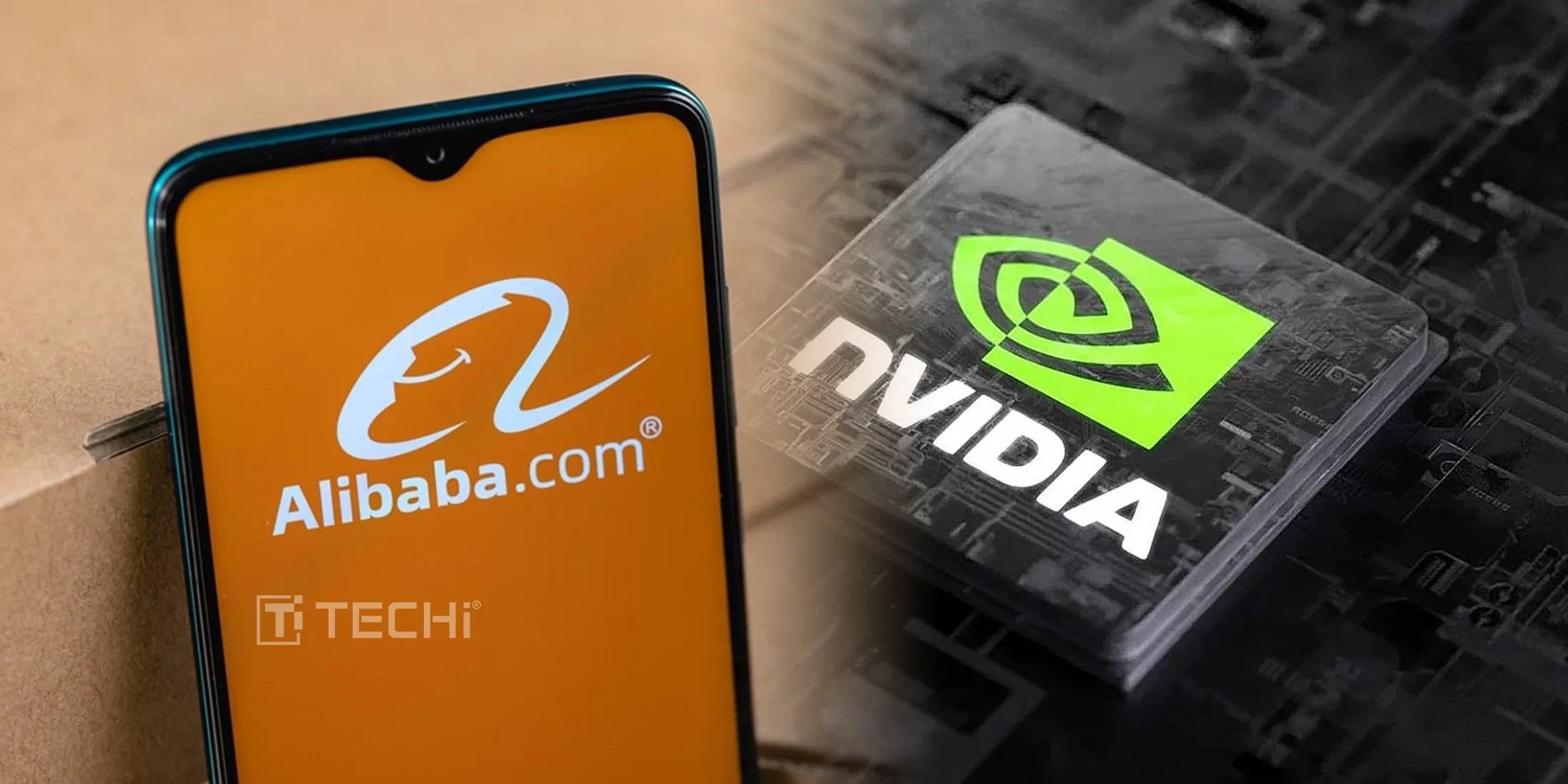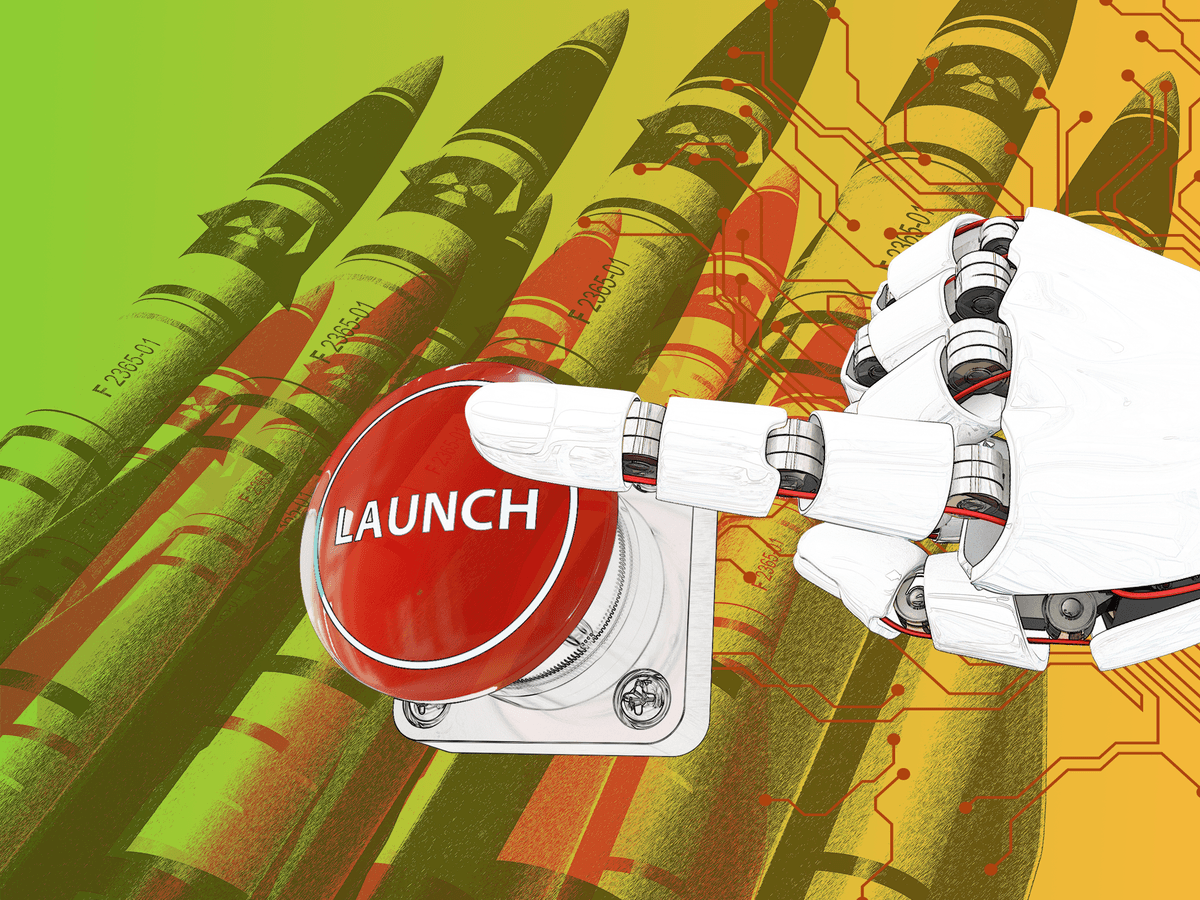"I'm a little scared, actually."
That was the confession of Sam Altman, CEO of OpenAI and one of the chief architects of the global AI revolution, when he talked about the potential of the technology he created. He compared the birth of the new generation of AI to the Manhattan Project, the project to build the atomic bomb, and warned of an imminent “power nuclear explosion”.
Altman’s fear is more than just paranoia about a machine-dominated future. It reflects a more mundane reality playing out in corporate boardrooms, data centers, and government corridors: a new cold war, unwritten but shaped by algorithms, semiconductors, and data flows.
While global public opinion is preoccupied with traditional geopolitical conflicts, a more significant confrontation is quietly reshaping the world economic order. This is not a war of bullets, but a race for control of the technology that will shape the future of humanity.
From a business perspective, this is a trillion-dollar competition where the winner not only wins market share, but also has the power to rewrite the rules of the game for the entire global economy .
New playground, new rules
The AI cold war is dividing the world into two completely opposite technological and business ideologies.
On one side is the US-led bloc, operating under a closed, monopolistic AI model. Here, a few tech giants like OpenAI, Google, and Anthropic hold the most powerful AI models, developing them like “walled gardens” where technology is a strictly protected asset. Their advantage is superior technological strength, a solid ecosystem, and the ability to attract huge investment capital.
On the other side of the fence is the China-led bloc, which is pursuing an open-source, universal AI philosophy. Corporations like Alibaba (with its Qwen model line), ByteDance (with Doubao), and especially DeepSeek are creating powerful models and making them widely available. This approach democratizes the technology, making AI cheaper and more accessible, driving innovation at scale.
This polarization is not just ideological, it is reinforced by telling numbers. According to the International Financial Forum (IFF), of the approximately 3 million AI workers globally, the US and China account for 57% (US 32.6% and China 24.4%). China is training more AI engineers than any other country, and its computing power is growing at a breakneck pace. By June, China’s total AI capacity had reached 246 exaflops and could reach 300 exaflops by the end of the year. An exaflop is a measure of supercomputer power, meaning a machine can perform one billion billion calculations in one second (1,000,000,000,000,000,000 calculations/second).
This confrontation creates a paradox: China, a strong contributor to the open-source ecosystem, has little say in shaping global safety and ethical standards. US-led initiatives like the Global Partnership on AI (GPAI) and the Bletchley Park conference seek to exclude or limit Beijing’s role. China’s calls to treat AI as a “global public good” are routinely ignored.
The result is a fragmented tech world. Companies are now competing not just on products, but also on standards, supply chains, and value systems.

The AI Cold War is shaped by two completely opposite business and technological philosophies led by two superpowers (Photo: Reuters).
Nvidia - The giant caught between two bullets
No company has felt the heat of the AI cold war more than Nvidia. With a market capitalization exceeding $4 trillion, Nvidia is not just a chipmaker but also a supplier of “weapons” to both sides in this war. And that position has put them in a “dilemma.”
The story began when Washington tightened export controls, preventing Nvidia from selling its most powerful AI chips (the Blackwell series) to China. The reason given was national security. Nvidia tried to "circumvent the law" by creating a weaker version, the H20 chip, specifically for the billion-people market.
But the tables have turned. Chinese officials were reportedly “insulted” by remarks by US Commerce Secretary Howard Lutnick, who said the US would not sell China “the best technology, nor second-rate, nor even third-rate.” Beijing responded by reportedly ordering domestic companies to stop buying Nvidia’s H20 chips.
The blow could cost Nvidia billions in lost revenue. The company’s second-quarter earnings report, despite a record profit and a 72% gross margin, sent its stock tumbling. Wall Street is worried about the “China factor,” what CEO Jensen Huang aptly called “geopolitical issues.”
Nvidia's position is now extremely complicated. They are caught between:
Pressure from Washington: Must comply with increasingly strict sanctions.
Pressure from Beijing: The Chinese market is not only a huge source of revenue, but also a "strategic hostage". Some people think that China's rejection of the H20 chip is a smart move, forcing Nvidia to be more active in lobbying the US government to bring more powerful chips to this market.
Rise of the competition: While Nvidia is tied down, rivals like AMD, Qualcomm, and even big customers like Google and Amazon are rushing to develop their own AI chips to break the monopoly.
Nvidia’s story is a classic case study of how 21st-century business can no longer be separated from geopolitics. The fate of the world’s most valuable company now depends not just on engineers in Santa Clara, but also on strategic considerations in Washington and Beijing.
China's response: Technological self-reliance
China’s response to being cut off from the most advanced technology is not resignation. Instead, it is going all in on an ambitious strategy: technological self-sufficiency. This is no longer a slogan, but a vital business imperative.
E-commerce giant Alibaba is at the forefront of this revolution. According to multiple sources, Alibaba is developing a completely new AI chip, the successor to the Hanguang 800 chip launched in 2019. With its T-head semiconductor design unit and a commitment to invest at least 45 billion euros in AI over the next three years, Alibaba is betting big on a future that is independent of Nvidia.

The AI cold war is evident in the story of Nvidia and Alibaba, two giants on opposite sides of the battle line (Photo: TECHi).
Alibaba’s strategy is smart. They don’t intend to compete directly with Nvidia in the global chip market. Instead, the new chip will be used internally, providing computing power for their massive cloud service ecosystem. Customers won’t buy chips, they’ll rent “computing power from Alibaba.” This is a business model that both ensures technological security and creates a unique competitive advantage.
Alibaba isn’t alone. Huawei already has its own AI chips, and Cambricon is emerging as a rising star. Nvidia CEO Jensen Huang has repeatedly warned the US government that if sales are banned, Chinese companies will find their own way to fill the void. That warning is becoming a reality.
The move comes in tandem with Beijing’s diplomatic efforts. At the Shanghai Cooperation Organization (SCO) summit, President Xi Jinping called for cooperation on AI while rejecting what he called “Cold War thinking.” It’s a two-pronged strategy: on the one hand, building up domestic technological capabilities to avoid being stifled; on the other, building a coalition of “like-minded” countries to create a parallel ecosystem where China sets the rules.
A world of fractured technology
The AI Cold War is bringing down a “digital iron curtain” that is dividing the global economy. The consequences for businesses are profound and complex.
Fragmented supply chains: Multinational companies that once operated in a flat world now face two largely incompatible technology ecosystems. They will have to choose suppliers, partners, and technology platforms based on their “nationality.” For example, the US-based AI company Anthropic has explicitly banned companies with majority Chinese ownership from using its products.
Increased Costs and Uncertainty: Operating in two parallel ecosystems means having two R&D strategies, two marketing strategies, and two compliance systems. This not only increases costs but also creates an uncertain business environment where regulations can change overnight.
The battle for the global south: Developing countries have become the main battleground in this competition. Both the US and China seek to draw these countries into their technological orbits, offering investment packages, technical assistance and governance standards. For these countries, this is both an opportunity to receive development resources and a risk of being caught in the jaws of two superpowers.
Third-party role: The European Union is trying to create a third path with the AI Act, creating a “Brussels effect” to set global standards. However, the big question is whether the EU can become a rule-maker, or will it end up being a “rule-follower” set by the US or China. Other middle-power countries such as the UAE and India are also looking to play a bridge role, but their influence remains limited.

The US-China confrontation is pushing the world to the brink of a fractured technology ecosystem that could escalate into an economic “nuclear crisis” (Photo: RAND).
History has taught us that a small mistake can spark a global catastrophe. The lessons of Sarajevo in 1914 still apply. To prevent the AI Cold War from escalating into an economic “nuclear meltdown,” the world needs bold but safe actions.
Strengthening international mechanisms such as the United Nations in developing a common risk management framework is a first step. The Bletchley Declaration, which involved both the US and China, is an important foundation, but needs to be substantiated by binding safety and transparency standards.
Technical cooperation, especially in the areas of open source and joint research, could be a bridge to rebuild trust. The US could consider easing some export restrictions in exchange for shared safety agreements with China. Middle powers could play a mediating role, as the UAE is partnering with Oxford University on AI training programs.
Failing that, the picture is bleak: a fractured global ecosystem, with a US-led alliance hoarding expensive proprietary technology, China dominating a separate open-source world, and the rest of the world scrambling for scraps. Unchecked competition, whatever its purpose, could unleash unseen demons. It is the task of business and government leaders now to extinguish the embers of AI governance before they explode into a conflagration that consumes the global economy.
Source: https://dantri.com.vn/kinh-doanh/chien-tranh-lanh-ai-chay-dua-viet-lai-luat-choi-toan-cau-20250908110847999.htm


![[Photo] General Secretary To Lam receives US Ambassador to Vietnam Marc Knapper](https://vphoto.vietnam.vn/thumb/1200x675/vietnam/resource/IMAGE/2025/9/29/c8fd0761aa184da7814aee57d87c49b3)
![[Photo] General Secretary To Lam, Secretary of the Central Military Commission attends the 12th Party Congress of the Army](https://vphoto.vietnam.vn/thumb/1200x675/vietnam/resource/IMAGE/2025/9/30/9b63aaa37ddb472ead84e3870a8ae825)
![[Photo] Solemn opening of the 12th Military Party Congress for the 2025-2030 term](https://vphoto.vietnam.vn/thumb/1200x675/vietnam/resource/IMAGE/2025/9/30/2cd383b3130d41a1a4b5ace0d5eb989d)
![[Photo] The 1st Congress of Phu Tho Provincial Party Committee, term 2025-2030](https://vphoto.vietnam.vn/thumb/1200x675/vietnam/resource/IMAGE/2025/9/30/1507da06216649bba8a1ce6251816820)





























![[Photo] General Secretary To Lam attends the ceremony to celebrate the 80th anniversary of the post and telecommunications sector and the 66th anniversary of the science and technology sector.](https://vphoto.vietnam.vn/thumb/1200x675/vietnam/resource/IMAGE/2025/9/29/8e86b39b8fe44121a2b14a031f4cef46)
































































Comment (0)